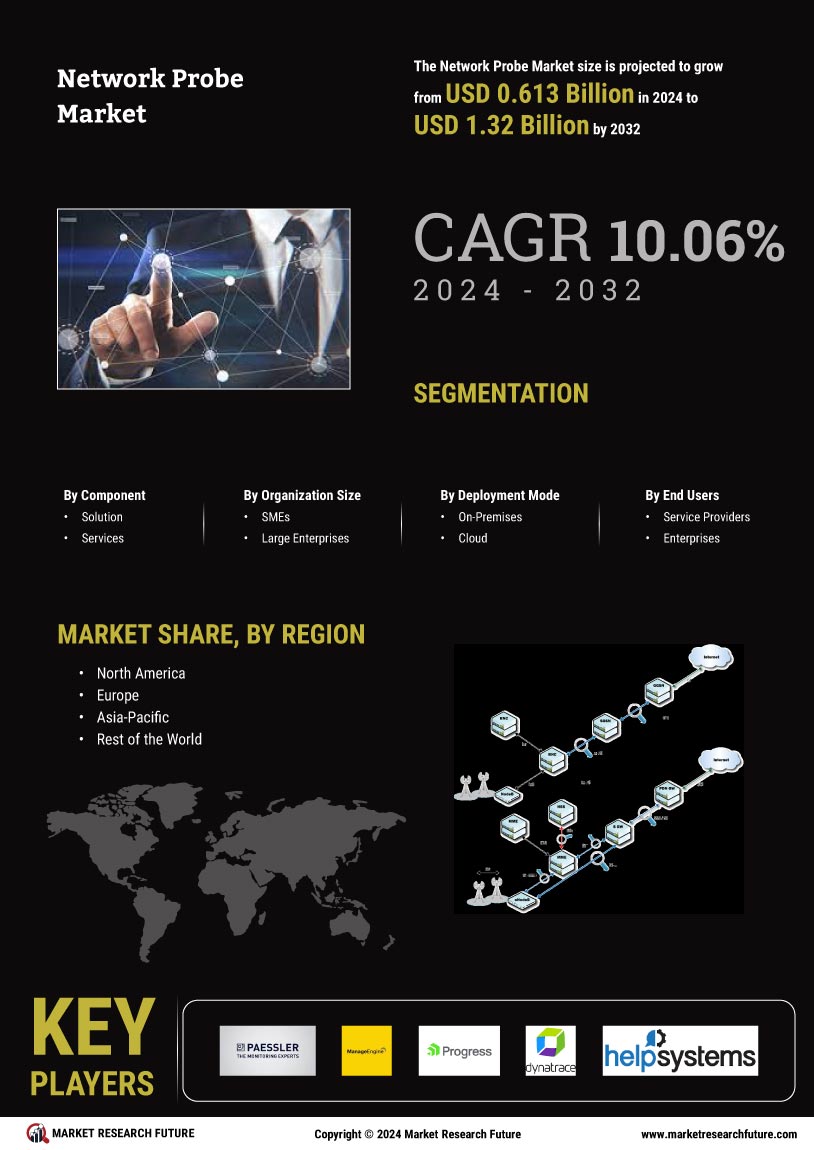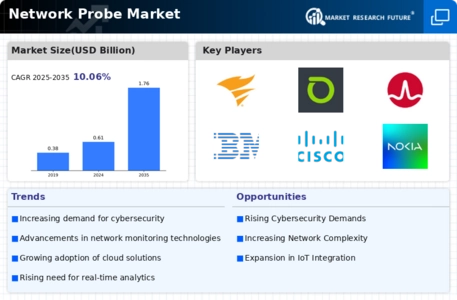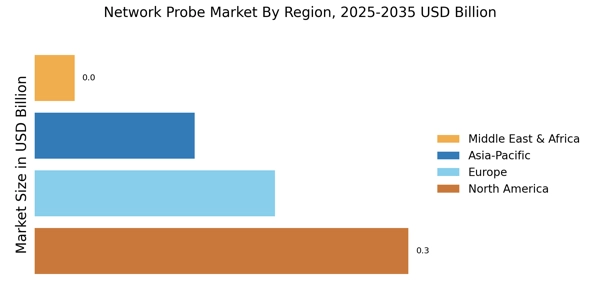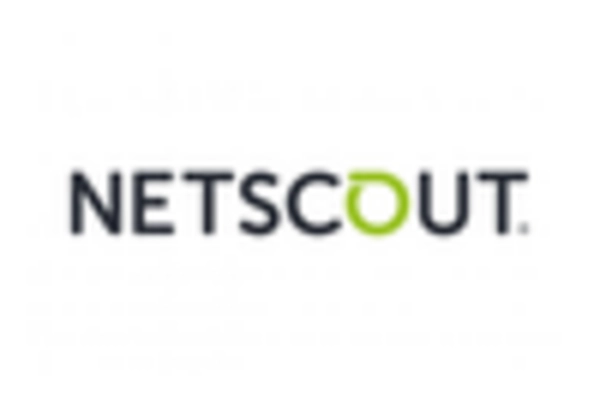Increased Cybersecurity Threats
The Network Probe Market is experiencing heightened demand due to the increasing frequency and sophistication of cyber threats. Organizations are investing in advanced network probes to enhance their security posture. According to recent data, cybercrime is projected to cost businesses over 10 trillion dollars annually by 2025. This alarming trend compels enterprises to adopt robust network monitoring solutions, thereby driving growth in the Network Probe Market. The need for real-time threat detection and response capabilities is paramount, as organizations seek to safeguard sensitive data and maintain operational integrity. Consequently, the market is witnessing a surge in the development of innovative network probe technologies that can effectively identify and mitigate potential vulnerabilities.
Adoption of IoT and Connected Devices
The proliferation of Internet of Things (IoT) devices is significantly influencing the Network Probe Market. With billions of connected devices expected to be in use, the complexity of network management increases. Network probes are essential for monitoring the performance and security of these devices, ensuring they operate efficiently within the network. As organizations integrate IoT solutions, the demand for sophisticated network monitoring tools rises. Market data suggests that the number of connected devices could reach 75 billion by 2025, creating a substantial opportunity for growth in the Network Probe Market. This trend necessitates the development of advanced probes capable of handling the unique challenges posed by IoT environments.
Regulatory Compliance and Data Privacy
The Network Probe Market is significantly impacted by the increasing emphasis on regulatory compliance and data privacy. Organizations are mandated to adhere to various regulations, such as GDPR and HIPAA, which require stringent monitoring of network activities. Non-compliance can result in hefty fines and reputational damage, prompting businesses to invest in network probes that ensure compliance with these regulations. The market is witnessing a shift towards solutions that not only monitor network performance but also provide insights into compliance status. This trend is likely to drive growth in the Network Probe Market as organizations seek to mitigate risks associated with data breaches and regulatory violations.
Growing Need for Network Performance Optimization
In the Network Probe Market, the demand for solutions that optimize network performance is on the rise. As organizations increasingly rely on digital infrastructure, ensuring seamless connectivity and performance becomes critical. Data indicates that network downtime can cost businesses thousands of dollars per minute, emphasizing the necessity for effective monitoring tools. Network probes play a vital role in identifying bottlenecks and performance issues, enabling organizations to proactively address these challenges. This focus on performance optimization is likely to drive investments in advanced network probe technologies, as companies strive to enhance user experience and operational efficiency. The Network Probe Market is thus positioned for growth as businesses prioritize performance management.
Emergence of Advanced Analytics and AI Integration
The integration of advanced analytics and artificial intelligence (AI) into network monitoring solutions is transforming the Network Probe Market. Organizations are increasingly leveraging AI-driven insights to enhance their network management capabilities. These technologies enable proactive identification of anomalies and potential threats, thereby improving response times and overall network security. Market Research Future indicates that the AI in the network monitoring market is expected to grow significantly, with projections suggesting a compound annual growth rate of over 20% in the coming years. This trend indicates a shift towards more intelligent and automated network probes, which are likely to dominate the Network Probe Market as businesses seek to harness the power of data-driven decision-making.


















Leave a Comment